Do you believe in the magic of a new year, a fresh start, the renewed power to create the life you’ve always dreamed of? I hope so. Let’s leverage this new year for all the inspiration and motivation we can get!
Because, as we all know, it’s not magic that will bring the fruits of our desires. Ultimately, it’s our day-to-day choices and actions that bring results—and, hopefully, the ones we wish for.
Each new year brings us an ever-more digital world, for better or worse. Whether or not you are energized by the latest biohacking technology—tracking your every heartbeat, footstep, brainwave, or calorie—we can all benefit from a simpler, more holistic way to restore mind-body balance, which may even reverse or slow the effects of aging.

Maharishi AyurVeda is a Consciousness-Based revival of the ancient science of natural health
In the 33 years of my integrative Ayurveda medical practice, I have found that the time-tested, evidence-based wisdom of Maharishi AyurVeda® has outperformed the best biohacking approaches, delivering the most profound and lasting transformations and rejuvenation I have ever witnessed.
Maharishi AyurVeda is the ancient science of natural health revived by Maharishi Mahesh Yogi, Founder of the Transcendental Meditation® (TM®) technique. It encompasses a 5,000-year-old tradition that includes the TM program, yoga, and a variety of Consciousness-BasedSM approaches to health.
According to Maharishi AyurVeda, Behavioral Rasayanas, or “actions that rejuvenate,” are the key to achieving a clear mind, a heart filled with love, and a body that defies the passage of time. The term Rasayana means “rejuvenation.” It describes any food, herb, activity, or circumstance that promotes youthfulness and good health, and is said to cause the production of something called Ojas throughout the physiology.
If rejuvenation, good health, and youthfulness are related to Behavioral Rasayanas, I’m in! But exactly what is Ojas, and how can we increase it? You already know more about it than you realize.
According to Maharishi AyurVeda, Behavioral Rasayanas, or “actions that rejuvenate,” are the key to achieving a clear mind, a heart filled with love, and a body that defies the passage of time.
Enhancing Ojas, the Fountain of Youth Within
Ever catch a glimpse of your face after a good night’s sleep, a deep, refreshing session of your TM practice, or a weekend TM Retreat? Were you struck by the clear, sparkly, golden light in your eyes, the radiant glow on your face, or a spontaneous impression of youthfulness?
According to Maharishi AyurVeda, these are all tell-tale signs of what is known as Ojas. Ayurveda considers Ojas to be the finest substance in the human body, as much consciousness as it is matter. Maharishi called Ojas the “lamp at the door” between consciousness and matter, lighting both inside and outside.
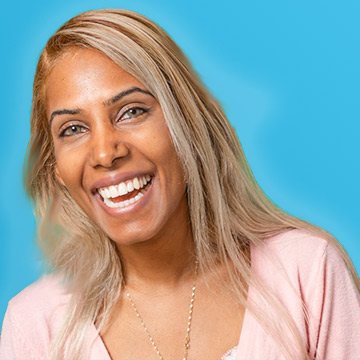
With more Ojas, we look and feel youthful and have stronger immunity and resilience
Ojas has not yet been identified by modern science, but the Ayurvedic texts understand it to be the finest end-product of perfect digestion. It is the subtle, life-giving essence of the food we eat, as well as the “seven drops” that reside in the heart and are essential to life.
Ojas is a “super glue” that connects consciousness and physiology, mind and matter. It is resistance-free, a superfluid “slide” through which the body’s inner intelligence flows into, governs, and guides the expression and function of every molecule, cell, tissue, and organ of our physical body, moment by moment.
According to Ayurveda, Ojas is the original healing balm that is abundant in babies and children, driving the growth and resilience of a youthful body. We all have Ojas, or we wouldn’t be alive. The more Ojas we make day by day, the more our body looks and feels youthful, and the stronger our resistance to disease and our resilience in the face of stress and strain.
Health magazines and the personal care industry strive to seduce us into thinking the latest skin cream or supplement is the answer to our quest to be forever young. But time-tested, scientifically-validated Maharishi AyurVeda comes with a simpler, more profound—and blissful—path to inner and outer beauty and staying youthful. Culture your Ojas, and you will radiate an attractiveness that goes beyond skin-deep applications.
According to Ayurveda, Ojas is the original healing balm that is abundant in babies and children, driving the growth and resilience of a youthful body.
My Favorite Five Choices for Promoting Ojas—with Immediate Results
How do we do this? Maharishi AyurVeda spells it out with 19 Behavioral Rasayanas, the actions that rejuvenate by promoting Ojas. Here I’ve chosen to highlight my favorite 4, plus a bonus 5th, all of which I’ve found to bestow powerful, immediate benefits for my patients. I list all 19 rejuvenative behaviors at the end of the article, and will treat others in more detail in future articles.
1. Practice the TM Technique Regularly
“Complete transcending is the best among the sources of health.”
—Charaka Samhita, foundational Ayurvedic text
Ojas is intimately connected to heart health, as the Charaka Samhita attests. This subtle essence of life resides in the heart. The Charaka Samhita also describes, “the seat of consciousness is in the heart.” Ojas is the connection between consciounsness and matter, and nowhere is that connection more vital and critical than in the heart.
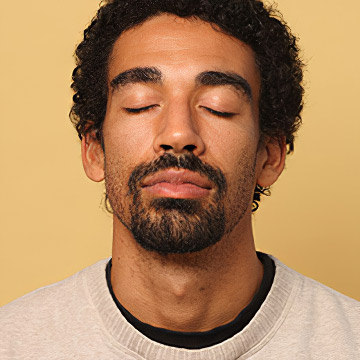
Hundreds of studies document the health and other benefits of the TM technique
The extensive body of research on the Transcendental Meditation technique concludes that meditating for health, especially heart health, is, well, a no-brainer.
Hundreds of studies document the many benefits of TM practice for improving mental, physical, and emotional well-being; increasing resilience; and healing post-traumatic stress disorder, heart disease, and blood pressure. For heart patients who practice the TM technique, mortality has been shown to be slashed by as much as 48 percent.10
The health benefits of the TM technique have been documented for over 50 years, and they keep growing. A recent study showing 20 percent increased blood flow in cardiac rehab patients during exercise was hailed as a “game-changer” in post–heart attack recovery.11
The Proof Is in the (Sugar-Free) Pudding
In my decades of clinical experience, those who practice the TM technique regularly, along with optimal nutrition and exercise, look years younger than their non-meditating peers with similar lifestyles. TM meditators have also tested out with better hearing, near vision, and blood pressure for their age. These are all the more valuable the older we get.
Beyond all the statistics, the greatest evidence and reward I experience from recommending the TM technique is seen firsthand in my patients. They return for their next visit with me with a healthier, Ojas glow, bright eyes, and a warmer and more relaxed demeanor.
Especially telling is the feedback I routinely receive when I ask new meditators, “How is your TM practice going?”
“It changed my life,” is the most common response, accompanied by gratitude and amazement. To me, that says it all.
2. Maintain a Positive Outlook
“Let us be radiating truth, radiating the light of life.
Never shall we denounce anyone,
Never entertain negativity.”—The Upanishads
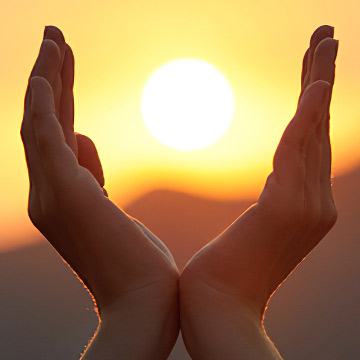
Modern research supports the precept of maintaining a positive outlook on life
The Upanishads, the ancient Vedic text extolling the unity and wholeness value of consciousness, echoes the Ayurvedic prescription that we maintain a positive outlook in life.
Does this mean we should banish any negative thoughts immediately to the recesses of our minds and hearts? Experience tells us this doesn’t work.
However, at some point we have a choice: We can work through our negative thoughts, feelings, and circumstances as best we can, or hang on to them. Ayurveda encourages us to try and resolve them, and move on to higher levels of happiness.
As the authoritative Ayurvedic textbook, the Charaka Samhita, advises, “One who wants to protect the heart, the great vessels, and the Ojas, should avoid particularly the causes due to affliction of the mind.”
Anger, grief, fear, and other negative emotions deplete the body of Ojas. Think: too much cortisol, not enough bliss. In modern terms, we might understand Ojas as the balanced neurotransmitters and neurohormones that uphold positive states of mind, body, and emotions.
“One who wants to protect the heart, the great vessels, and the Ojas, should avoid particularly the causes due to affliction of the mind.” —Charaka Samhita, foundational Ayurvedic text
Modern research supports these ancient precepts. Studies on optimism versus pessimism show that a positive outlook predicts a longer life, with up to 55 percent lower death rates, half the risk of heart disease, lower blood pressure, less infections, and better overall health for as long as a 30-year follow-up period.1
These effects are found for optimism expressed both as a personality trait (a generalized expectation of good outcomes in a variety of areas in one’s life) and as an explanatory mode (an overall way of assuming that everything will turn out in the end, you’re not to blame, and good things will come again).
What’s not yet known is how modifiable our outlook is. But to the degree our choice to take a positive viewpoint can help us, Maharishi AyurVeda encourages us to “look for the silver lining.”
3. Be Giving and Charitable

Acts of giving benefit our health and longevity
Giving and charity are basic tenets of every religion and values of every society. Why is that? Not only are they good for the other, they’re also good for us.
How do you feel when you reach out to a friend, loved one, or stranger in need, with patient listening, a warm smile, or a practical gift of support? It does something for you, and if you are lucky, you’ll feel a wave of love in your heart.
Love, in its physiological effects, is perhaps the most Ojas-enhancing and Ojas-full state we can experience. Love nourishes us, as it nourishes all around us. Giving and other actions, born of and inspiring the experience of love, by their very nature enhance Ojas.
“A loving heart, a heart full of love, is the precious essence of human life.” —Maharishi Mahesh Yogi
A growing body of research shows that giving a gift, volunteering, or donating to charities have a positive impact on our physical and mental health as well as on our longevity. This effect is often referred to as “the helper’s high.” Self-esteem and self-worth soar with giving, as depression and low moods fade away.2
For example, a study published in Science found that fMRI brain scans showed that receiving money, seeing money go to a good cause, or deciding to donate money all activated similar pleasure-related centers deep in the brain of people engaged in these actions. However, researchers found, the pleasure activation was greatest when one voluntarily chose to give, rather than when one gives through taxation.3
“The higher brain response to voluntary giving might correspond to the ‘warm glow’ people reportedly experience when they’ve donated money to a good cause.” —Dr. William Harbaugh
Neuroeconomist William Harbaugh, Ph.D., the first author of the study, commented, “The higher brain response to voluntary giving might correspond to the ‘warm glow’ people reportedly experience when they’ve donated money to a good cause.”
From the perspective of Maharishi AyurVeda, this “warm glow” clearly speaks of the Ojas effect at work.
4. Be Balanced in Activity and Sleep
“Rest and activity are the steps of progress.” —Maharishi
“Balance is the key to perfect health.” —Maharishi AyurVeda
From the point of view of Maharishi AyurVeda, the purpose of life—the expansion of happiness and the growth of consciousness—is attained through a balanced life. Balanced rest and activity means regular sleep and practice of the Transcendental Meditation technique, along with activities that contribute positively to your life and the life of those around you.
The Activity Piece
When it comes to balanced activity, it’s a good idea to slow down and smell the roses. If nothing else, allow yourself enough time to avoid hurrying and getting stressed out. Maharishi AyurVeda has a rather dramatic aphorism that sums up the effect of hurry and stress:
“Stressed activity, hurriedly done, destroys Ojas.” —Maharishi AyurVeda
When we think further of activity, most of us today are thinking of exercise—our favorite New Year’s resolution after giving up sugar. From the perspective of Maharishi AyurVeda, is there an ideal form of exercise?
In Vedic times, the great Ayurvedic physician and sage Charaka was asked by his disciple, “What is a Rasayana that is totally free, relaxing, and invigorating, and is available every day to everyone?”
Sage Charaka replied, “A walk in the rising sun.”
Walk to Live—Step It Up for Ojas
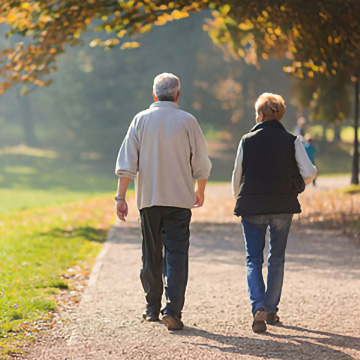
Walking in morning light is especially beneficial for health and longevity
Modern research has also shown walking to be invaluable to health. And here’s some encouraging news for you: We don’t need to hit the “holy grail” of 10,000 steps per day to better our health.
Recent research by I-Min Lee and colleagues at Harvard Medical School looked at 16,741 women ages 62 to 101 (average age 72) and tracked their steps over a four-year period.4
The key findings are:
• Women who averaged 4,400 daily steps (versus 2,700 per day for sedentary women) had a 41 percent reduction in mortality.
• Mortality rates progressively improved before leveling off at approximately 7,500 steps per day.
Studies have also shown that when people are exposed to morning light—specifically, at least 20 minutes a day before noon—they have lower body weight and more optimal metabolism, even when controlled for their caloric intake and sleep habits.5
It appears Charaka was 2,500 years ahead of his time with his prescription. Sometimes “ancient” is the new new!
The Sleep Piece
“Sleep is the nurse of all living beings.” —Maharishi AyurVeda
Basically, get your Zzz’s or else. Dementia, heart attacks, reduced immunity, and all manner of ills are attributed to inadequate sleep at night. Most adults need at least 7 hours of sleep each day.
Two recent large studies and a summary of 23 studies from the past 30 years have shown that 7–8 hours of sleep are optimal for health and longevity.6,7,8

Regular sleep duration of 7–8 hours is ideal for health
Compared with individuals with sleep durations of 7–8 hours, there is an increased risk of dying among those who reported a short sleep duration (usually substantially less than 7 hours) as well as among those who reported a long sleep duration (generally 9 hours or more). Remember, we said balance—even too much sleep is not healthy.
Maharishi AyurVeda goes even further to suggest that the timing of our sleep is also important. For the best quality of sleep it is recommended that we hit the hay by 10:00 p.m., lights out. Then we awaken our freshest in the morning, both in how we look and feel.
Research supports early bedtime in adolescents. It has been shown to reduce depression and suicidality and increase academic success and productivity later in life.9
You may no longer be a teen, but this research likely applies to adults too. We just need to find someone who thinks researching “bedtime” in those over 20 will be of value. Ayurveda assures us it will.
5. Bonus—Supporting the Flow of Ojas with Panchakarma
“To protect the heart and great vessels, above all, take measures that are healthy for the heart and promote Ojas, that cleanse the gaps and channels, and help create serenity of mind.”
—Charaka Samhita
As Maharishi AyurVeda describes, for Ojas to flow and reach all the farthest and subtlest regions of the physiology, the gaps and channels must be clean and clear. Here is where the world’s original detox program, Panchakarma or “cleansing actions,” are routinely applied. Traditionally, these are recommended at least twice a year, typically at the change of season.
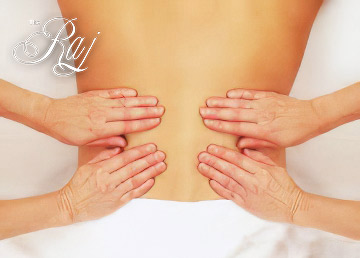
Maharishi Panchakarma includes specialized massage treatments
Through massage, heat, herbalized oil applications, and internal cleansing treatments, Maharishi PanchakarmaSM helps the body’s own purification mechanisms to clear the circulatory channels down to the tiniest gaps between, within, and even inside the cells themselves.
In modern scientific terms, the goal of this extensive cleansing aims to keep DNA and protein synthesis, and all the mechanics of physiological functioning, connected to the body’s inner intelligence. This enhances Ojas, the superfluid slide of consciousness into matter.
Maharishi Panchakarma Health Centers, U.S.A.
To find out more and plan your own Ojas-enhancing detox treatment, visit the websites for the two Maharishi AyurVeda Health Centers that offer Panchakarma treatments in the United States.
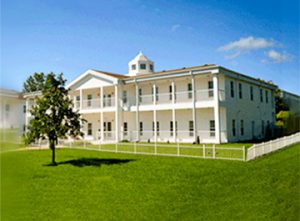
The Maharishi AyurVeda Integrative Health Center, Fairfield, Iowa
The Maharishi AyurVeda Integrative Health Center (MAIHC)
Located at Maharishi International University in Fairfield, Iowa, the new Panchakarma clinic at MAIHC provides state-of-the-art, research-level Panchakarma treatments at discounted prices in a non-profit university setting. Learn more ►

The Raj Maharishi AyurVeda Health Center, Fairfield, Iowa
The Raj Maharishi AyurVeda Health Center
The Raj offers the most comprehensive and complete set of Maharishi Panchakarma treatment programs available in the United States in a luxurious spa setting. The Raj is also located in Fairfield, Iowa, and has been offering in-residence Maharishi Panchakarma programs for over 25 years. Learn more ►
19 Behavioral Rasayanas—Qualities and Actions That Rejuvenate
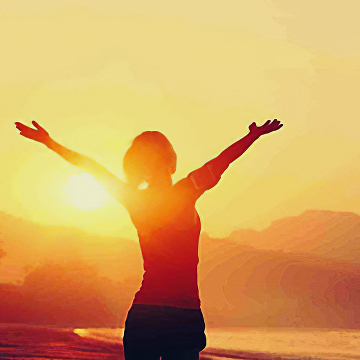
Behavioral Rasayanas promote a long and happy life
The following Behavioral Rasayanas are the traits and behaviors listed in the classical Ayurvedic text that are particularly supportive for health. Read them and enjoy.
If you find that you are already behaving in these ways, or exhibit these traits in your daily life, then know that your body is busy creating Ojas and neurochemicals that support good health on a daily basis.
If not, strive to adopt them little by little over time, to grow those qualities of mind and heart that produce abundant Ojas, support your health and longevity, and make you feel and look fresh, happy, and youthful.
“The individual who is of the following qualities should be regarded as continuously using Rasayana.” —Charaka Samhita
Here Is Your Ojas-Growing, Life-Enhancing Mission
1. Be truthful, without guile or cunning.
2. Maintain balanced sleep and wakefulness.
3. Be free of anger.
4. Practice nonviolence.
5. Be calm.
6. Do not strain.
7. Be sweet-spoken.
8. Meditate regularly.
9. Persevere.
10. Pursue universal or spiritual knowledge.
11. Be giving and charitable.
12. Practice cleanliness.
13. Keep the company of elders.
14. Be loving and compassionate.
15. Do not be conceited.
16. Behave well with everybody.
17. Be respectful of teachers, mentors, and elders.
18. Do not overindulge in alcohol or sexual activity.
19. Maintain a positive outlook.
Notes
1. Harvard Medical School, Harvard Men’s Health Watch, May 2008. www.health.harvard.edu/heart-health/optimism-and-your-health
2. Caroline E Jenkinson, Andy P Dickens, Kerry Jones, Jo Thompson-Coon, Rod S Taylor, Morwenna Rogers, Clare L Bambra, Iain Lang & Suzanne H Richards. Is Volunteering a Public Health Intervention? A systematic review and meta-analysis of the health and survival of volunteers. BMC Public Health. August 23, 2013. bmcpublichealth.biomedcentral.com/articles/10.1186/1471-2458-13-773
3. William T. Harbaugh, Ulrich Mayr, Daniel R. Burghart. Neural Responses to Taxation and Voluntary Giving Reveal Motives for Charitable Donations Science, June 15, 2007. www.science.org/doi/10.1126/science.1140738
4. Steve Calechman. 10,000 Steps a Day — or Fewer? Harvard Health Publishing, July 11, 2019. www.health.harvard.edu/blog/10000-steps-a-day-or-fewer-2019071117305
5. Kathryn J. Reid, Giovanni Santostasi, Kelly G. Baron, John Wilson, Joseph Kang, Phyllis C. Zee. Timing and Intensity of Light Correlate with Body Weight in Adults. PLOS ONE. April 2, 2014. journals.plos.org/plosone/article?id=10.1371/journal.pone.0092251
6. Gallicchio L, Kalesan B. Sleep Duration and Mortality: a systematic review and meta-analysis. Journal of Sleep Resolution. 2009;18:148-58.
7. Hublin C, Partinen M, Koskenvuo M, Kaprio J. Sleep and Mortality: a population-based, 22-year follow-up study. Sleep. 2007;30(10):1245-53.
8. Ferrie JE, Shipley MJ, Cappuccio FP, Brunner E, Miller MA, Kumari M, et al. A Prospective Study of Change in Sleep Duration: associations with mortality in the Whitehall II cohort. Sleep. 2007 Dec 1;30(12):1659-66.
9. Gangwisch, James E., Ph.D., et al. National Longitudinal Study of Adolescent Health—USA– 1994-1996; Sleep, Vol. 33, No. 1, 2010. Columbia U., NY.
10. Schneider RH, Grim CE, Rainforth MV, Kotchen T, Nidich SI, Gaylord-King C, Salerno JW, Kotchen JM, Alexander CN. “Stress Reduction in the Secondary Prevention of Cardiovascular Disease: Randomized, controlled trial of Transcendental Meditation and health education in blacks.” Circulation: Cardiovascular Quality and Outcomes 5(6):750-758, 2012.
11. Maharishi University of Management. PET Scans Show Transcendental Meditation with Cardiac Rehabilitation Increases Blood Flow to the Heart. 12, 2019. www.eurekalert.org/pub_releases/2019-12/muom-pss112619.php
* If you have a health condition or take medication, please consult your physician before adopting any new exercise or dietary recommendations. Although unlikely, if any discomfort occurs, stop the above recommendations.
Best-selling author Nancy Lonsdorf, M.D., is recognized as one of the nation’s most prominent Ayurvedic doctors, and has integrated Maharishi Ayurveda in her medical practice for over 30 years. She is the author of three books on Ayurveda for women, and is a recognized expert in Ayurveda, women’s health, and the prevention and reversal of memory issues and cognitive decline. Dr. Lonsdorf currently sees patients in her private practice in both Fairfield, Iowa, and San Diego, California. For tips, self-quizzes, and information on consultations with Dr. Lonsdorf, visit www.drlonsdorf.com. To schedule a personal Wellness Consultation by phone or teleconference, or an in-person visit, please contact Dr. Lonsdorf’s office at 641-469-3174 or healthoffice@drlonsdorf.com
© Copyright 2020, Nancy K. Lonsdorf, M.D. All rights reserved. Do not reproduce without written permission of the author.

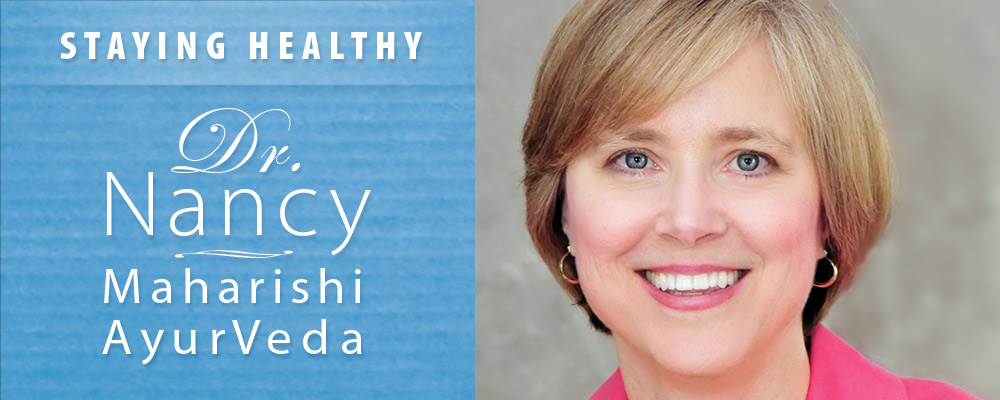

Comments